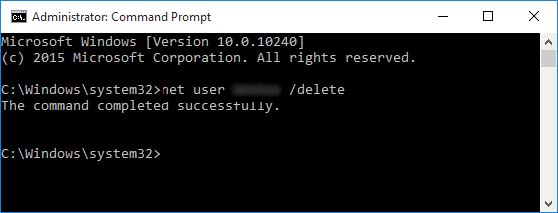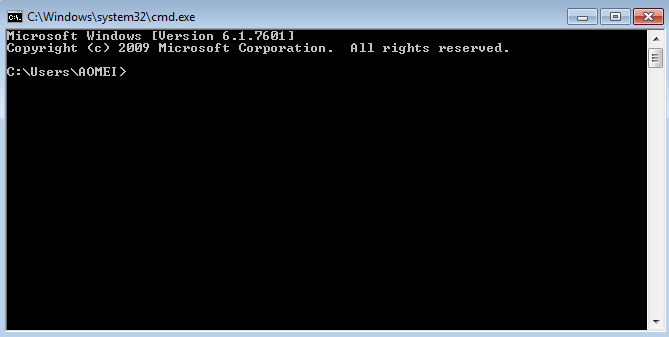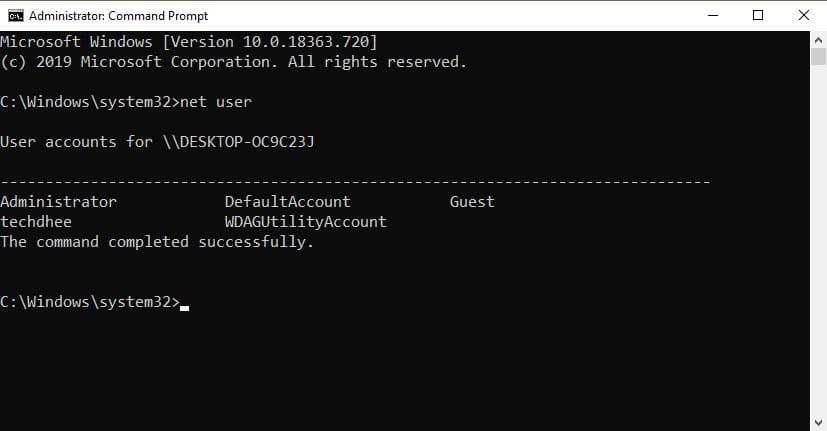

Many users have complained that the Command Prompt appears then disappears on Windows 10. Type any command into cmd: and press Enter key to execute it. In this case, you will not only be able to run commands, but also make necessary changes.Ĥ. Alternatively, click on Run as administrator, if you want to use it as an administrator. Click on Open from the right pane of search results to launch it.ģ. Type Command Prompt or cmd in the Windows search box.Ģ. You can open Command Prompt through these steps:ġ. Moreover, multiple troubleshooting actions can be performed using Command Prompt on your Windows computers.
#CREATE NEW USER COMMAND PROMPT WINDOWS 10 HOW TO#
Through this guide, you can learn everything you need to know about Command Prompt viz what is Command Prompt, how to use it, reasons for this issue, and how to fix the Command Prompt that disappears on Windows 10.Ĭommand Prompt is a useful feature of Windows systems that can be used to install & update programs. I was just trying to do it today, and I think I got it, this is what I think works well įirst, some doskey macros DOSKEY cd=cdtilde.If you are experiencing Command Prompt appears briefly then disappears problem, you are at the right place. (see above, I finally got it all working the way I wanted it to.) Will post again if I can improve my answer. I think there must be a way to solve that. > cd "c:\Program Files"įiles""]= was unexpected at this time.

In case anyone else tried my approach, my original answer below didn't handle spaces, eg, the following failed. Which means just an initial quote also works, or completely without quotes also works.Īll other stuff below may be ignored now, it is left for historical reasons - so I dont make the same mistakes again Oh, also it allows lazy quoting, which I found useful, even when spaces are in the folder path names, since it wraps all of the arguments as if it was one long string. config folder under my home folder)Ĭd /Program Files (eg, "C:\Program Files")Ĭd C:/Program Files (eg, "C:\Program Files")Ĭd \Program Files (eg, "C:\Program Files")Ĭd C:\Program Files (eg, "C:\Program Files")Ĭd "C:\Program Files (eg, "C:\Program Files")Ĭd "C:\Program Files" (eg, "C:\Program Files") Tested fine with cd ~ (traditional habit)Ĭd ~/.config (eg, the. :: replace forward-slashes with back-slashes :: if starts with ~, then replace ~ with userprofile path If defined dirname if NOT "%dirname:~3%"="" ( :: strip trailing slash, if longer than 3 If "%dirname%"="" set dirname=%orig_dirname:"=% :: restore dirnames that contained only "/" Create the cdtilde.bat file and put it somewhere in your PATH off Create these doskey macros, somewhere they get picked up every time cmd starts up. In addition, this one now is also able to use ~ as a prefix for other home sub-folders too, and it swaps forward-slashes to back-slashes as well. This one finally works with spaces as well, where my previous answer would fail.

Final summary, even though I've moved on to powershell for most windows console work anyway, but I decided to wrap this old cmd issue up, I had to get on a cmd console today, and the lack of this feature really struck me.


 0 kommentar(er)
0 kommentar(er)
